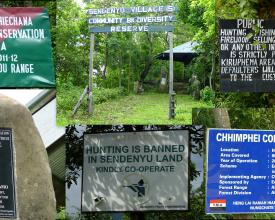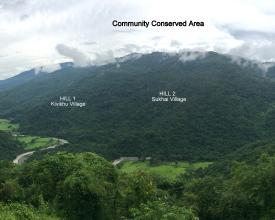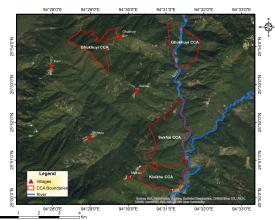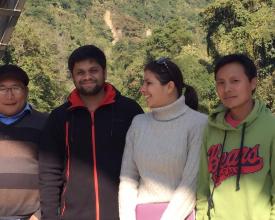
Strengthening community conservation in a biodiversity hotspot PATHFINDER AWARD 2021 WINNER
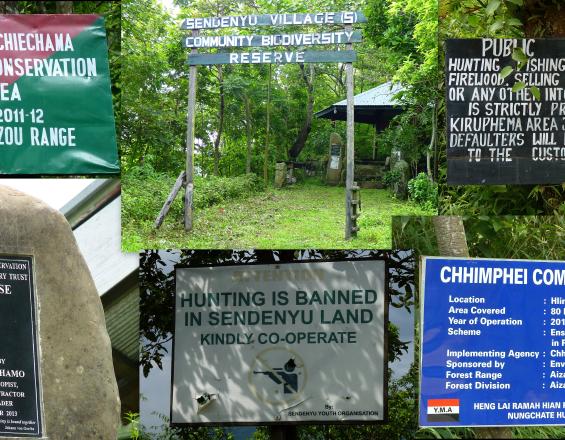
A pilot scale project was initiated in the 3 villages of Sukhai, Kivikhu & Ghukhuyi in Nagaland, which aimed at creating & linking Community Conserved Areas (CCAs) across the landscape & supporting conservation through livelihood creation. The model adopted aimed at strengthening the resilience of the communities by rejuvenating traditional conservation practices & providing supplementary livelihoods. Activities included compiling Indigenous Knowledge, sensitization on landscape conservation & capacity building of the communities in biodiversity documentation & monitoring, as well as promoting ecotourism as a livelihood option. Today, the project has yielded +ve results in terms of sustainable use of biological resources by adopting longterm sustainability, enhanced governance & effective conservation of landscape. This model is being mainstreamed within the governance mechanism & upscaled through a multipronged approach including financial support & legal recognition.
Context
Challenges addressed
In Nagaland, though traditional conservation practices have helped protect biodiversity, and there are records of CCAs being declared in the early 1800s, especially in response to forest degradation and loss of wildlife, these CCAs face numerous challenges in their creation, effectiveness and sustainability and require sustained efforts for their conservation. The foremost challenge faced by 81% of CCAs is providing alternative livelihoods. Morever, these CCAs are isolated dense patches of forests and there is a need to ensure conservation of large contiguous forest areas by enabling the formation of jointly managed CCA.
Location
Process
Summary of the process
The local champions manage to motivate the communities to initiate as well as continue the conservation related activities . The documentation of local biodiversity through People's Biodiversity Registers helps to codify the oral knowledge as well as know more about the bidoiversity. Alternate livelihood in form of ecotourism helps the the youth, women’s groups and the traditional hunters of the community to enhance their household income.
Building Blocks
Local Champions
Having local champions is key to give thrust to the initiative & for the communities to own it. This also leads to rapid spread of such conservation successes & sustained motivation. Several deliberations were held initially with the communities of the three pilot villages in order to increase awareness about the impending ecological threat & the advantages of integrated approaches at the community & stakeholder level to manage the resources collectively and efficiently. During these deliberations, local champions were identified from each village. Though many interested individuals came forward, it was Mr Ivan Jimo in Sukhai village, Mr K. Vikuto Zhimomi in Ghukhuyi village and Mr Kakishe Muru and Mr Bokato Muru who were in constant touch with us & took keen interest in what the project had to offer and most importantly understood the reasons behind it. We put them in touch with like minded leaders of the communities carrying out similar conservation activities in NorthEast India. There was transfer of knowledge when we invited other community leaders to the CCA as well as organised the travel of our local champions to witness other successfull case studies. We have also involved them on several online as well as offline platforms where they could speak about their conservation initiatives.
Enabling factors
In order to support and motivate them, we continuosly had an open communication with them to tackle all the challenges on the way. Continuous motivation from our side was one of the enabling factor that lead to the local champions mobilising community members and explaining concepts & problems in simple ways giving easy to understand examples that people relate to.
Lesson learned
The involvement of communities, through local champions and stimulating local initiatives, has been key for successful mainstreaming of nature in sustainable development and enhanced awareness of sustainability.
Based on all this exposure the local champions as a part of their own grasroot organisation and without TERI's help has submitted their first independent proposal to the UNDP and Ministry of Environment, Forest & Climate Change of India funded project titled 'Other Effective Area-Based Conservation Measures(OECMs) initiatives geared towards helping these communities.
Alternative conservation-linked livelihoods
Developing working, alternative conservation-linked livelihoods is the lifeline of conservation initiatives that incur financial burdens.
The idea of initiating ecotourism as an alternate livelihood emerged while conducting biodiversity surveys. We observed that the communities especially the hunters and the youth had a keen eye to spot wildlife as well as good understanding of the forest in general. That's when the youth were trained in documentation of flora and fauna by experts. Sightings were recorded in field registers and this created a community of conservationists among the youth. By documenting unique, rare or special fauna, these surveys acted as a catalyst to attract ecotourists from far and wide.
Thus, the youth, along with the hunters dependent on hunting for subsistence from the three pilot villages, were targeted and trained as nature guides with other trainings in association with Air BnB and Titli Trust on hygiene and environment care in homestays, safety and security, housekeeping service, and food and beverage service, maximizing sales and managing money, and low cost marketing.
Through website and advertisements on bird and butterfly enthusiast groups in India, biodiversity meet's were organised to bring in ecotourists and promote ecotoursim.
Enabling factors
Livelihood option in form on Ecotourism was successful to an extent. Not only did the presence of the visitors aided in boosting nature-based ecotourism, but also the biodiversity assessments further added to the knowledge of the faunal biodiversity. The visitors participated in the biodiversity surveys, stayed in local homestays in the villages of Sukhai and Khivikhu, tasted sumptuous local cuisine, watched the traditional Sema dances and engaged with the local community to understand their activities to conserve their natural resources.
Lesson learned
The training of youth in biodiversity assessments and sustainable use of natural resources, as well as the training and capacity building of local community members as nature guides for ecotourism, has resulted in enhanced livelihood opportunities with the steady flow of tourists that are visiting this area to spot ‘bird and butterfly specials’. Now the communities take pride in actively conserving the local biodiversity and overall landscape. Many of the species that were rare to sight have made a comeback as communities continue to patrol and conserve their CCA.
However, these are very remote landscapes with very poor road connectivity and hence depsite having tremendous biodiversity and artisitc homestays, very few ecotourists rather the only hardcore bird watchers or butterfly enthusiasts have shown interest to visit these areas. In future, if the road connectivity is improved then it may lead to better opportunities of earning and promoting ecotourism for the local communities. This has further motivated the communities, including those from neighboring villages, to take up conservation and protect their natural resources
Indigenous Ecological Knowledge
Tapping into traditional knowledge and drawing upon the rich cultural traditions and biological heritage of local communities gives them a sense of pride in their heritage and enhances conservation outcomes. Documentation of the PBR by Sükhai village was an excellent entry point for enhanced conservation.
Enabling factors
The PBRs prepared for the three villages of Sukhai, Kivikhu and Ghukhuyi document the folklore, traditional knowledge, ecology, biodiversity and cultural practices of the locals and help codify the oral knowledge of the communities.
Lesson learned
Over time traditional knowledge has eroded and the folklore and practices that supported the wise use of their landscapes are being lost. The elders were satisfied with the documentation of their traditional and cultural indigenous knowledge in the People’s Biodiversity Registers (PBRs).
Impacts
Around 222 species of birds, 200 species of butterflies have been documented and protected by declaring 939 hectares as community conservation reserve and banning hunting and destructive fishing across the remaining landscape of forests and rivers (total area being 3751 hectares).
The direct beneficiaries so far have been 1200 individuals from 3 villages while number of indirect beneficiaries that have been sensitized through various tools is approximately 10000 individuals.
The communities reported increases in the protection of natural resources after the formation of jointly managed CCAs, and improvement in management of common resources.
The elders were satisfied with the documentation of their traditional and cultural indigenous knowledge in the People’s Biodiversity Register while the women, youth & hunter groups reported increases in their household income due to ecotourism by $260 per household per year.
Neighboring 7 villages that share their forests & natural resources with the current three pilot villages have approached TERI to be a part of the CCA network and replicate the conservation related activities in their respective CCAs as well.
Beneficiaries
The primary beneficiaries of the project consist of community and community institutions (Village Councils, Biodiversity Management Committees, CCA Committees, hunters, church groups, youth and women.
Sustainable Development Goals
Story
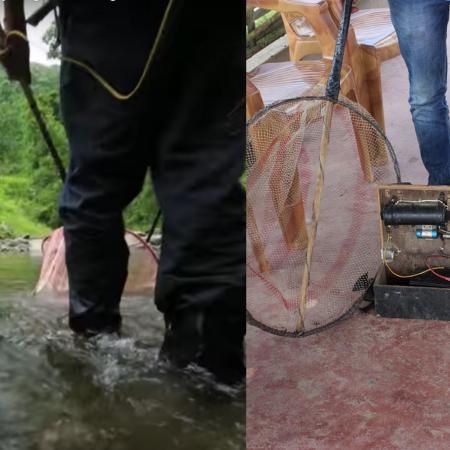
Along with my colleagues and community members, I used to regularly visit the villages to document the biodiversity of area. During one of my visit’s, I was on a mission to track and find the Hodgson’s frogmouth (Batrachostomus hodgsoni), a nocturnal bird species usually found near Tizu river. But after reaching the river, we found several people partying on the river bank. The villagers in our team explained that the river bank is a famous party spot for nearby villages. They still decided to check for known faces in the crowd and if any illicit activity was being carried out. To my surprise they had found fishing gear, which included battery, based fishing equipment. They showed us dead fish in the bucket and a jar full of beetles collected from the riverbank. This clearly indicated a case of illegal fishing and hunting in the conserved area. The offenders were asked to be present in the village the next day so that a legal notice (summons) could be issued to them explaining what they had violated and the amount they had to pay as fine. This act put forth by the communities of Nagaland made me realise the sincerity and efforts that some of the community members are ready to put in towards conservation of nature.


